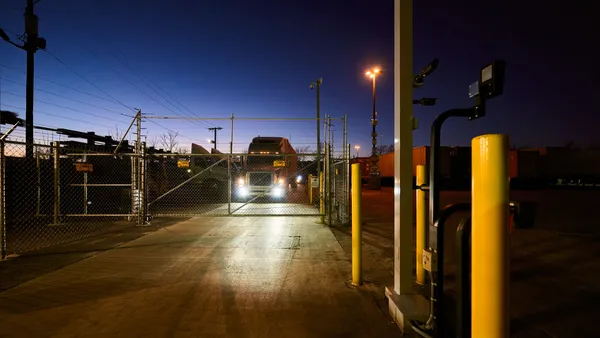Recently, we've worked closely with partners, clients and industry leaders to analyze global supply chain dynamics. Our findings, enriched by insights from our aim10x executive sessions across industries, reveal key lessons from recent disruptions.
A significant observation is that many large-scale enterprises rely on legacy software like SAP APO and BY primarily as systems of record, with actual planning continuing to be carried out offline in siloed spreadsheets. It's clear that managing multi-billion dollar global operations via Excel is unsustainable, inefficient and environmentally unsound, especially during intense disruptions.
This brings us to a vital question: Why is it more important than ever to replace your legacy planning software? Here, we’ve identified a few key capabilities that businesses should adopt to provide their supply chains with a competitive edge moving forward.
Driver-based demand management to identify risks and opportunities sooner. Recent challenges have shown that many organizations react too slowly to significant changes, such as:
-
Product mix shifts: A sharp rise in demand for essential products and a decline in others.
-
Channel shifts: Substantial moves between go-to-market channels requiring localized data due to region-specific trends.
-
Regional demand variability: Differences in lockdown and reopening schedules across countries, cities and sometimes, zip codes.
-
Temporary surges: Spikes in demand due to customer and consumer stockpiling, with subsequent dips in demand being unpredictable.
Investing in Demand Sensing, Key Account Collaboration and AI-enabled forecasting allows faster detection and response to demand risks and opportunities. Using comprehensive sell-in and sell-out data, like consumer pricing and promotions, can make your planning proactive, especially for businesses targeting retail channels. Even if it seems you lack data, your organization likely has underutilized information and collaborating with sales, marketing and consumer teams can uncover crucial data, significantly refining your planning processes.
Driver-based supply management to improve visibility and adaptability. Many organizations lack sufficient visibility into their supply chains, particularly in the following areas:
-
Production changes: Varying rates of production slowdowns and ramp-ups among suppliers.
-
Inventory and capacity visibility: Challenges in viewing inventory and capacity across different ERP systems and record-keeping platforms.
-
Upstream constraints: Limited visibility into upstream constraints at suppliers, including Tier-2 and Tier-3 suppliers.
Now is the time to invest in technology to create a digital twin of your value chain, modeling capacities, costs, inventory, material availability and partners, without worrying about data constraints. Start with the construction of a digital twin to enhance visibility, deliver significant value and set the foundation for increasing agility across your operations.
Supplier Relationship Management (SRM) to enhance partnerships and resilience. Effective SRM enhances transparency and collaboration with suppliers, helping companies anticipate and mitigate risks, manage costs and improve service quality - key in today’s disruptive marketplace.
Integrated planning and rapid response for near real-time decision-making. Many organizations find running scenarios in disconnected systems or spreadsheets both time-consuming and ineffective. Integrating planning and response processes facilitates real-time scenario analysis, enabling quicker, more informed decision-making by evaluating trade-offs.
Typical scenarios to explore include:
-
Short-term horizon: Balancing immediate shifts in regional/product mix demand with existing inventory and network capacity.
-
Mid-term horizon: Developing risk-based profit and loss scenarios to prepare for various future states, ranging from worst-case to best-case outcomes.
But, to gain true value from this, the next step is to:
-
Bridge silos: Bridging commercial and supply chain silos in planning and decision-making is crucial. For example, if demand forecasts range from 95 (worst case) to 120 (best case), commercial teams build scenarios in a platform, analyze P&L impacts and then seek feedback from supply chain colleagues.
After P&L evaluation, the supply chain team would respond almost instantly, offering a supply commitment to these scenarios. More importantly, they provide a detailed breakdown of the true cost-to-serve, including non-standard costs such as expedited shipping, flexible capacity and alternative sourcing options. This step is crucial because while each commercial scenario has its risks and opportunities, the actual costs incurred by the supply chain are tangible and immediate. Before committing additional resources, it's vital to understand these financial trade-offs and discuss them with key stakeholders from Commercial, Supply Chain and Finance departments.
-
Accelerating planning cycles: Traditional monthly S&OP processes can't keep up with the need for faster decision-making, necessitating weekly S&OE and daily updates. Legacy systems, designed for slower, sequential processes, hinder quick risk and opportunity identification. Modern systems supporting faster, more effective decision-making are crucial.
o9 Solutions offer a fast, agile approach to replace your legacy software, with use cases from leading companies and a Digital Process Prototype to start your organization’s transformation journey.










